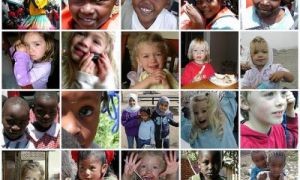Multiple Intelligences Theory in Early Childhood Education
Developed by Howard Gardner, the Multiple Intelligences Theory proposes that intelligence is diverse, meaning children learn in different ways beyond traditional linguistic or logical approaches. Recognizing these variations helps educators create inclusive and engaging learning environments.
Key Types of Intelligence
-
Linguistic Intelligence – Learning through words, storytelling, and reading.
-
Logical-Mathematical Intelligence – Problem-solving, patterns, numbers, and reasoning.
-
Spatial Intelligence – Visualizing and understanding objects, maps, and designs.
-
Musical Intelligence – Responding to rhythm, sound, and melodies.
-
Bodily-Kinesthetic Intelligence – Learning through movement, hands-on activities, and physical exploration.
-
Interpersonal Intelligence – Understanding and interacting with others effectively.
-
Intrapersonal Intelligence – Self-awareness, reflection, and independent thought.
-
Naturalistic Intelligence – Connecting with nature, animals, and environmental awareness.
Applying Multiple Intelligences in Early Childhood Settings
-
Example: A child who excels in bodily-kinesthetic intelligence may engage best through hands-on activities, like sensory play and movement-based games.
-
Application: Educators design diverse learning experiences that cater to multiple intelligences, ensuring all children find ways to express and develop their strengths.
EYLF Connection
National Standards Alignment
Cognitive Theory in Early Childhood Education
Cognitive Theory, developed by Jean Piaget and expanded by scholars like Lev Vygotsky, focuses on how children think, process information, and develop understanding. It emphasizes that learning is an active mental process, shaped by experiences, problem-solving, and interactions.
Key Principles of Cognitive Theory
-
Stages of Cognitive Development (Piaget) – Children progress through different cognitive stages as they grow.
-
Schema Formation – Learning occurs as children build mental frameworks (schemas) and adjust them through experiences.
-
Assimilation & Accommodation – Knowledge is expanded by either integrating new information into existing ideas or adjusting previous understandings.
-
Active Exploration – Children engage in trial-and-error learning to develop problem-solving skills.
Cognitive Theory in Early Childhood Settings
-
Example: Educators encourage open-ended questioning and problem-solving activities, allowing children to apply reasoning skills in real-world contexts.
-
Application: Learning environments are structured to support exploration, inquiry, and memory-building, reinforcing cognitive development.
EYLF Connection
National Standards Alignment
Psychosocial Theory in Early Childhood Education
Developed by Erik Erikson, Psychosocial Theory focuses on how children develop their individual identities through social experiences. Erikson believed people progress through eight life stages, each presenting a unique challenge that shapes personality and emotional growth.
Key Principles of Psychosocial Theory
-
Trust vs. Mistrust (Infancy) – Babies develop trust when caregivers provide consistent love, support, and reliability.
-
Autonomy vs. Shame/Doubt (Toddlerhood) – Toddlers build independence when allowed to explore safely. Overly restrictive environments may cause self-doubt.
-
Initiative vs. Guilt (Preschool Age) – Children develop confidence by taking initiative in tasks, supported by encouragement from adults.
-
Industry vs. Inferiority (School Age) – Success in learning and social interactions fosters competence, while negative experiences may create feelings of inadequacy.
Psychosocial Theory in Early Childhood Settings
-
Example: Educators help toddlers develop autonomy by allowing them to make choices, like selecting toys or serving their own food.
-
Application: Responsive caregiving builds trust, ensuring children feel safe and secure in their environment.
EYLF Connection
National Standards Alignment
Attachment Theory in Early Childhood Education
Developed by John Bowlby, Attachment Theory explores how early relationships between children and caregivers shape emotional and social development. Bowlby believed that strong, secure attachments in infancy lay the foundation for trust, resilience, and healthy relationships later in life.
Key Principles of Attachment Theory
-
Secure Attachment – When caregivers provide consistent, responsive care, children feel safe and confident exploring their environment.
-
Insecure Attachment – If care is inconsistent, neglectful, or overly controlling, children may develop anxieties or difficulties in relationships.
-
Attachment Behaviors – Infants display seeking behaviors like crying or clinging to maintain proximity to caregivers.
-
Internal Working Models – Early attachment experiences shape a child’s expectations about relationships and emotional security throughout life.
Attachment Theory in Early Childhood Settings
-
Example: Educators foster strong, trusting relationships by responding warmly and consistently to children’s needs, supporting emotional regulation.
-
Application: Secure attachments in early learning environments help children feel confident, safe, and ready to engage in learning experiences.
EYLF Connection
National Standards Alignment
-
Element 5.1.1: Encourages positive educator-to-child interactions, ensuring children feel valued, respected, and emotionally supported.
Hierarchy of Needs Theory in Early Childhood Education
Developed by Abraham Maslow, the Hierarchy of Needs Theory outlines a series of human needs that must be fulfilled for individuals to reach their full potential. Maslow suggested that people progress through these needs in a structured order, starting with basic survival and leading to personal growth.
Maslow’s Five Levels of Needs
-
Physiological Needs – Basic survival needs such as food, water, sleep, and shelter.
-
Safety Needs – Feeling secure in one’s environment, including physical safety and emotional stability.
-
Love and Belonging – Developing relationships, forming connections, and feeling accepted by others.
-
Esteem Needs – Building self-confidence, gaining respect, and developing a sense of competence.
-
Self-Actualization – Reaching one’s full potential through creativity, learning, and personal growth.
Hierarchy of Needs in Early Childhood Settings
-
Example: If a child is hungry or tired, they may struggle to focus on learning. Meeting their physiological and emotional needs first ensures they can engage meaningfully in educational experiences.
-
Application: Educators create a safe, supportive, and nurturing environment, allowing children to feel secure and ready to learn.
EYLF Connection
National Standards Alignment
Children’s Play Theory in Early Childhood Education
Children’s play theory explores the role of play in learning and development, emphasizing its importance for cognitive, social, emotional, and physical growth. Several theorists have contributed to the understanding of how play fosters learning and builds essential life skills.
Key Theorists and Their Play Theories
-
Jean Piaget (Cognitive Play Theory) – Play helps children process and reinforce knowledge, moving through different cognitive developmental stages (sensorimotor, preoperational, concrete operational).
-
Lev Vygotsky (Sociocultural Play Theory) – Play is socially constructed, allowing children to engage in role-playing and imaginative scenarios that support learning.
-
Mildred Parten (Stages of Social Play) – Identified six types of play:
-
Unoccupied Play – Random movement and observation.
-
Solitary Play – Playing alone without engaging others.
-
Onlooker Play – Watching peers play without participating.
-
Parallel Play – Playing near others without interaction.
-
Associative Play – Interaction begins but no structured collaboration.
-
Cooperative Play – Fully engaged in shared activities and teamwork.
-
Sara Smilansky (Types of Play and Cognitive Development) – Focused on four types of play:
-
Functional Play – Repetitive actions that enhance motor skills.
-
Constructive Play – Creating and building with objects.
-
Dramatic Play – Pretend play, fostering creativity.
-
Games with Rules – Structured play involving guidelines.
Children’s Play Theory in Early Childhood Settings
-
Example: Providing open-ended materials, such as blocks and dress-up costumes, encourages creativity, problem-solving, and social interaction.
-
Application: Play-based learning environments ensure that children explore, experiment, and build relationships naturally.
EYLF Connection
-
Learning Outcome 4: Encourages children to be confident and involved learners, using play to foster exploration and curiosity.
-
Learning Outcome 5: Supports communication through play, developing language and expression.
National Standards Alignment
-
Element 1.1.3: Play-based learning fosters active engagement and developmentally appropriate experiences.
-
Element 5.1.1: Promotes positive educator-to-child interactions, supporting learning through guided play.
Understanding and implementing early learning theories is essential for creating engaging, responsive, and developmentally appropriate experiences for children. These theories provide valuable insights into how children learn, process information, and develop essential life skills. By incorporating principles from constructivism, behaviourism, social learning, and multiple intelligences, educators can foster environments that support curiosity, exploration, and meaningful learning.
Further Reading
Child Theorists and Their Theories in Practice
Kenneth Rubin - Theories Of Play
Linking Theories To The EYLF
John Dewey's Theory
Activities That Link To Educational Theories
Erik Erikson - Psychosocial Development
Linking Theories To The Developmental Milestones
Incorporating Theorists Into Early Childhood Documentation







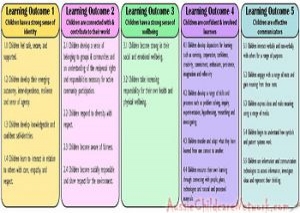 Here is the list of the EYLF Learning Outcomes that you can use as a guide or reference for your documentation and planning. The EYLF
Here is the list of the EYLF Learning Outcomes that you can use as a guide or reference for your documentation and planning. The EYLF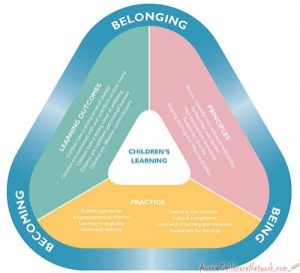 The EYLF is a guide which consists of Principles, Practices and 5 main Learning Outcomes along with each of their sub outcomes, based on identity,
The EYLF is a guide which consists of Principles, Practices and 5 main Learning Outcomes along with each of their sub outcomes, based on identity, This is a guide on How to Write a Learning Story. It provides information on What Is A Learning Story, Writing A Learning Story, Sample
This is a guide on How to Write a Learning Story. It provides information on What Is A Learning Story, Writing A Learning Story, Sample One of the most important types of documentation methods that educators needs to be familiar with are “observations”. Observations are crucial for all early childhood
One of the most important types of documentation methods that educators needs to be familiar with are “observations”. Observations are crucial for all early childhood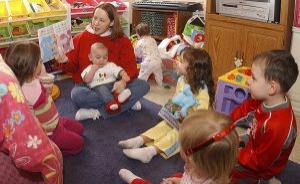 To support children achieve learning outcomes from the EYLF Framework, the following list gives educators examples of how to promote children's learning in each individual
To support children achieve learning outcomes from the EYLF Framework, the following list gives educators examples of how to promote children's learning in each individual Reflective practice is learning from everyday situations and issues and concerns that arise which form part of our daily routine while working in an early
Reflective practice is learning from everyday situations and issues and concerns that arise which form part of our daily routine while working in an early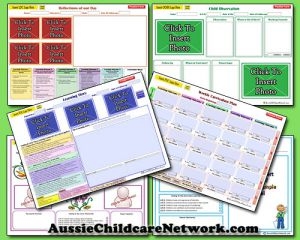 Within Australia, Programming and Planning is reflected and supported by the Early Years Learning Framework. Educators within early childhood settings, use the EYLF to guide
Within Australia, Programming and Planning is reflected and supported by the Early Years Learning Framework. Educators within early childhood settings, use the EYLF to guide When observing children, it's important that we use a range of different observation methods from running records, learning stories to photographs and work samples. Using
When observing children, it's important that we use a range of different observation methods from running records, learning stories to photographs and work samples. Using This is a guide for educators on what to observe under each sub learning outcome from the EYLF Framework, when a child is engaged in
This is a guide for educators on what to observe under each sub learning outcome from the EYLF Framework, when a child is engaged in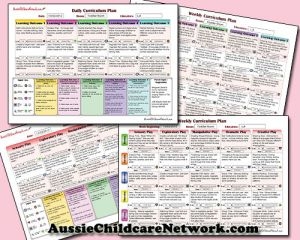 The Early Years Learning Framework describes the curriculum as “all the interactions, experiences, activities, routines and events, planned and unplanned, that occur in an environment
The Early Years Learning Framework describes the curriculum as “all the interactions, experiences, activities, routines and events, planned and unplanned, that occur in an environment